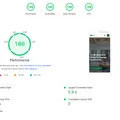Your Website Needs To Be Accessible By 28th June 2025…
For many years website accessibility has been an option for businesses to take, but very soon it's going to be compulsory. You need to ensure your website is accessible to your customers, near enough anywhere in the world.
For instance, in the EU, if your website isn't accessible by June 28th, 2025, you could be breaking the law. The European Accessibility Act comes into full force on that date and applies to an extensive range of websites. If you serve users in Europe, you’re likely included, even if you’re based elsewhere.
But the EU isn’t the only place where accessibility is law. Countries around the world are cracking down on inaccessible websites, and non-compliance could mean fines or lawsuits.
Global Laws and Punishments
- UK: The Equality Act 2010 makes it illegal to discriminate against people with disabilities. That includes digital access, and for most businesses that's your website. If your site can’t be used by everyone, you could be sued for discrimination.
- US: The Americans with Disabilities Act (ADA) has already led to thousands of lawsuits. A poorly designed website can cost you thousands in legal fees.
- EU: The European Accessibility Act makes WCAG 2.2 AA compliance mandatory for key sectors. No compliance, no business.
- Australia: Under the Disability Discrimination Act 1992, public-facing websites must be accessible. The law requires adherence to WCAG.
- Argentina: Law 26,653 requires both public and private websites to be accessible.
You really don’t want to be the test case. You don’t want your business on the wrong side of a lawsuit. You need to get this sorted.
What Does an "Accessible Website” Actually Mean?
Put simply, an accessible website means making your website usable for the 1.3 billion people around the world living with a disability, and ensuring your business can serve them online.
To be considered accessible, your website needs to meet the Web Content Accessibility Guidelines (WCAG) 2.2 AA standard. That means:
- Alternative text (alt text) for all images and media (screen readers can’t read photos)
- Keyboard-only navigation (not relying solely on mouse interactions, a user should be able to use the TAB and Enter keys to easily navigate your website)
- Logical heading structures and clear HTML
- Readable text with enough contrast and scalable font sizes
- Captions and transcripts for video and audio
- Accessible forms with labels and helpful error messages
- No flashing content that could trigger seizures
- Clear focus states so users can see where they are on the page
- Mobile accessibility and support for screen readers
And the list goes on. Accessibility touches everything in the website creation process: design, development, content and overall user experience.
Why It Takes Time (So Don’t Wait)
Achieving full accessibility is not something you can slap together the week before the deadline.
You’ll need to:
- Audit your current site to see what’s non-compliant
- Redesign or update your UI to fix layout and contrast issues
- Fix the underlying code to make it screen reader and keyboard friendly
- Write alt text, adjust forms, clean up navigation
- Test thoroughly with assistive tech
- Train your team to keep accessibility in mind moving forward
- In some cases, you may need a full website rebuild
This is a multi-disciplinary effort, if you start now, you can do it properly. But wait too long, and you’ll be rushing to fix things under pressure, or worse, paying legal fees.
Accessibility Is Good for Business
There’s a reason why brands like Apple, Microsoft, and Airbnb invest heavily in accessibility: it makes them money.
Accessible websites are:
- Faster (good accessibility often leads to better performance)
- Easier to navigate (good UX benefits everyone)
- Better for SEO
- More inclusive, reaching more potential customers and therefore sales
- Legally compliant, saving you from future headaches
And let’s be honest, it’s just the right thing to do.
Most Sites Are Not Ready
Only 5.2% of the internet is currently accessible to people with disabilities.
That means 94.8% of businesses are likely going to have a problem come June 2025.
Please just don’t be one of them. Especially because it is so easy to do.
What You Should Do Today
- Book a website discovery call or website audit video – Find out where you stand.
- Start fixing major issues – Prioritise keyboard navigation, contrast, and screen reader compatibility.
- Work with an expert – This is not the time to guess. Find a website agency that knows about website accessibility.
- Train your team – Design, development, marketing, they all play a part.
- Build accessibility into every future project – This is not a one-off that's going to go away. You need to build it into your companies future.
We Can Help
At Test Valley Digital, all of our clients are already prepared for the June 2025 deadline. All of our websites are designed and developed to meet WCAG 2.2 AA standards as standard, and we know what it takes to get businesses ready before the deadline.
Whether you need an audit, a rebuild, or just a second opinion, we’re ready to help.







